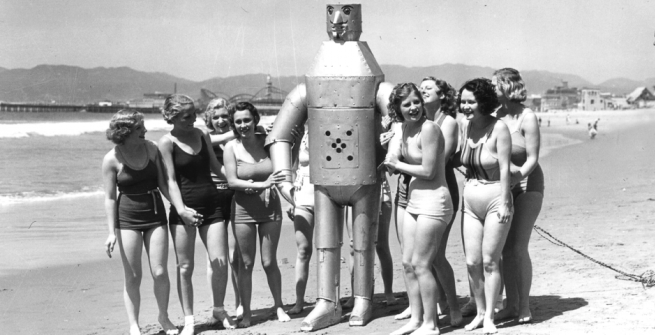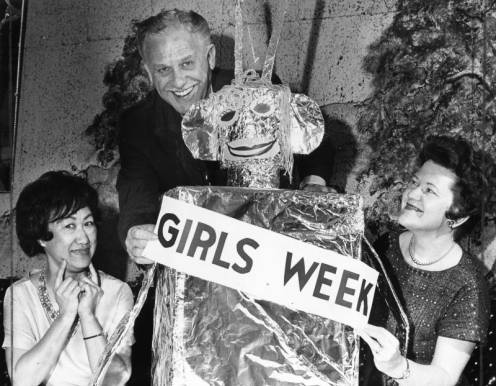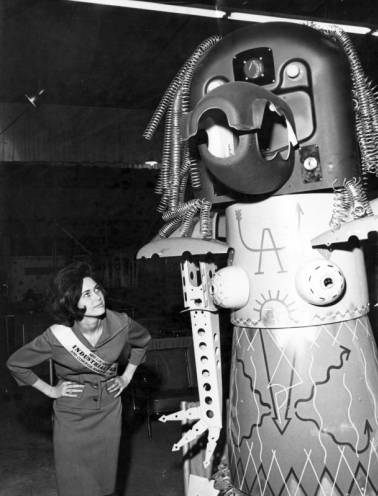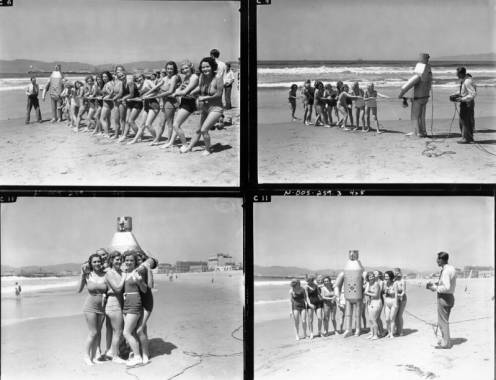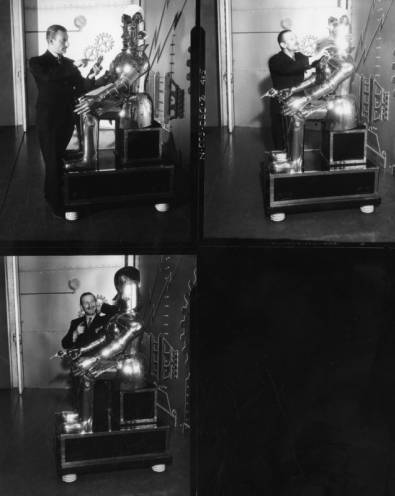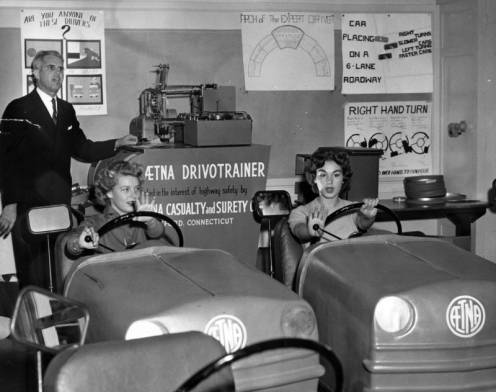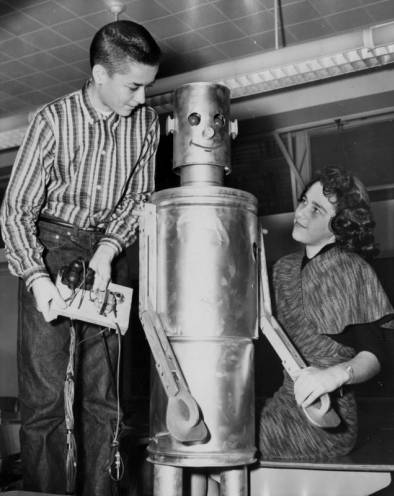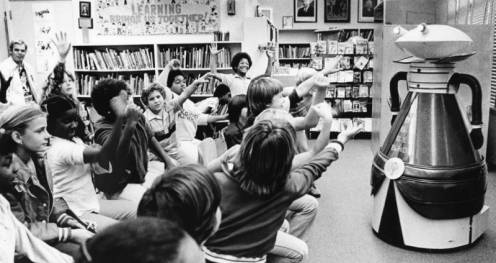Happy birthday robots! The word "robot" is now 100 years old, as first introduced in Karel Čapek’s dystopian play R.U.R. (Rossumovi Univerzální Roboti / Rossum's Universal Robots) which debuted in January 1921. Robots in current parlance are programmable machines or machine hybrids that perform tasks automatically; various dictionary definitions emphasize human or animal resemblance, autonomy, being made of metal, or lack of emotions. Čapek repurposed an older and now-disused term ‘robot’ from various Central European languages that meant a “system of serfdom, by which a tenant's rent was paid in forced labour or service,” according to the OED. "Roboti" referred to the serfs in Czech; the German ‘arbeit’, or work, is a cognate. Etymologically, robots are workers or servants.
The robots in R.U.R. are artificially created flesh-and-blood, synthetic humans, more like the replicants in Blade Runner than the blocky metal men popularized in 50s b-movies. In the play (set around the year 2000), robots have become universally commonplace as laborers, and though sentient, are treated like appliances. Human births decline as the robot economy spreads around the world. Characters debate whether robots have souls and should perhaps be freed; by the end, it is too late, and a robot uprising annihilates humanity except for a single engineer named Alquist. The formula for creating new robots has been destroyed, but a pair of more advanced robots, Primus and Helena, develop feelings for each other. Alquist blesses them to go forth as the new Adam and Eve.
Robots nowadays take all sorts of surprising forms, from a Roomba to a Reaper drone. Science fiction honcho Isaac Asimov was very concerned about robot subservience and human safety. His famous "Three Laws of Robotics" are not really laws in the sense that robots necessarily conform to them, but more like programming safeguards he hoped would help prevent Čapek’s robot uprising:
- Law 1: A robot may not injure a human being or, through inaction, allow a human being to come to harm.
- Law 2: A robot must obey orders given to it by human beings except where such orders would conflict with the first law.
- Law 3: A robot must protect its own existence as long as such protection does not conflict with the first or second laws.
Of course, these only raise more debate. What about military robots, or robots with feelings? Or ethical situations where it might be better for one human to come to harm to avoid some much greater harm to others? Is it wrong for us to fabricate a class of lesser beings programmed to be subservient to us? Are the concepts of ‘human’ and ‘robot’ merging anyway as humans become more enhanced and robots become more humanlike? In Asimov’s own books, these ‘laws’ are often broken: robots find loopholes or reprogram themselves. One robot adopts a profession that he believes transcends the laws—he becomes a writer.
Enjoy these robots from the library's photo archive, TESSA.
